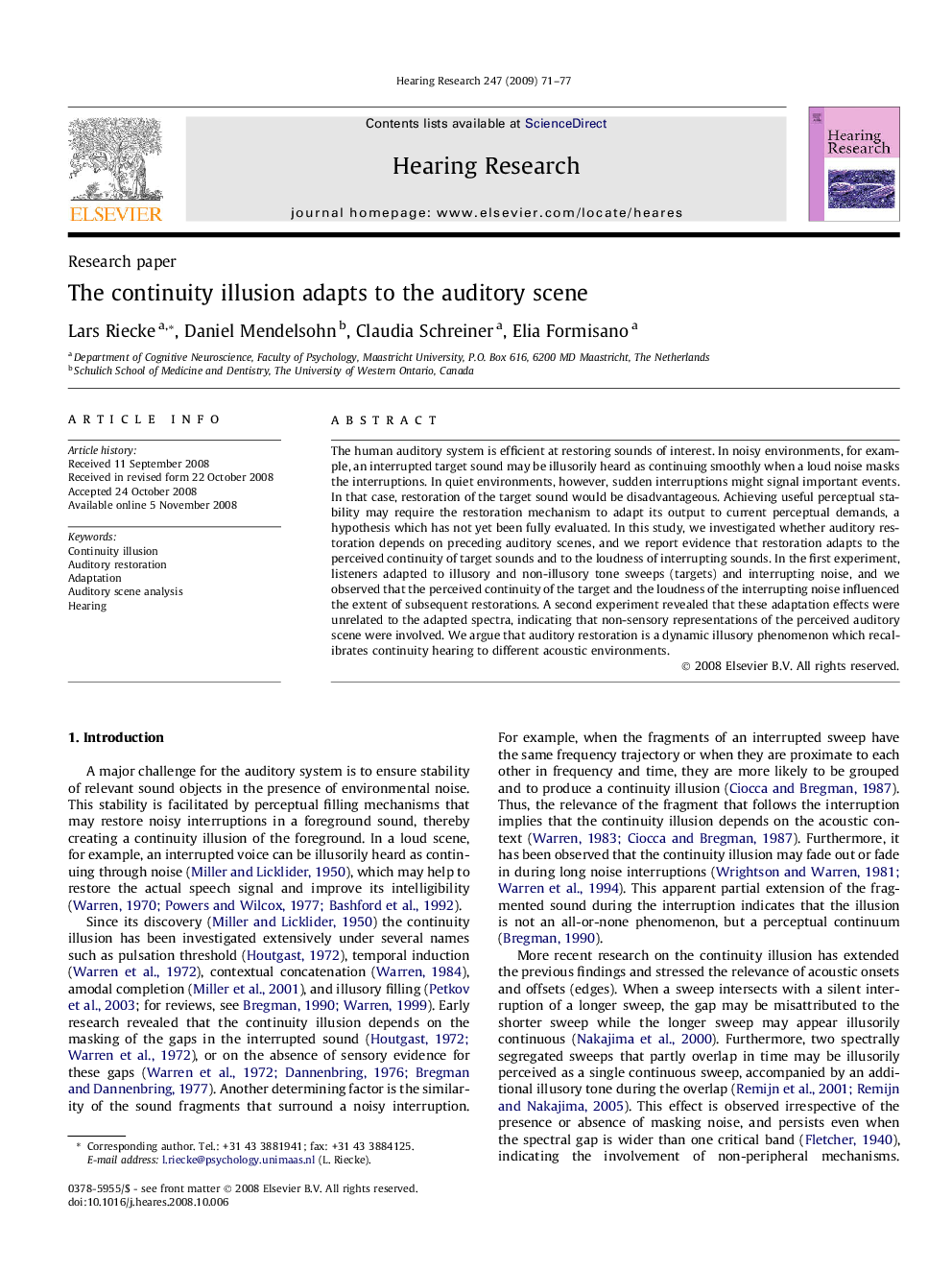| Article ID | Journal | Published Year | Pages | File Type |
|---|---|---|---|---|
| 4356021 | Hearing Research | 2009 | 7 Pages |
The human auditory system is efficient at restoring sounds of interest. In noisy environments, for example, an interrupted target sound may be illusorily heard as continuing smoothly when a loud noise masks the interruptions. In quiet environments, however, sudden interruptions might signal important events. In that case, restoration of the target sound would be disadvantageous. Achieving useful perceptual stability may require the restoration mechanism to adapt its output to current perceptual demands, a hypothesis which has not yet been fully evaluated. In this study, we investigated whether auditory restoration depends on preceding auditory scenes, and we report evidence that restoration adapts to the perceived continuity of target sounds and to the loudness of interrupting sounds. In the first experiment, listeners adapted to illusory and non-illusory tone sweeps (targets) and interrupting noise, and we observed that the perceived continuity of the target and the loudness of the interrupting noise influenced the extent of subsequent restorations. A second experiment revealed that these adaptation effects were unrelated to the adapted spectra, indicating that non-sensory representations of the perceived auditory scene were involved. We argue that auditory restoration is a dynamic illusory phenomenon which recalibrates continuity hearing to different acoustic environments.
